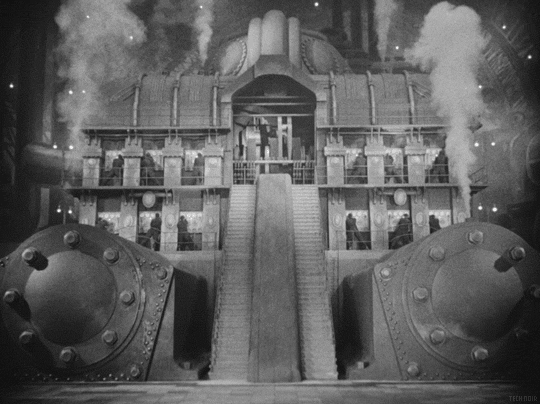Coding Design For Debugging Tools
Your Project Manager Needs to Design and Code
Designers who code and manage their own projects can work closer with engineers, and speak the language of business. Early-stage startup employees are like combo TV/VCRs. As companies scale, they hire specialized employees. But there are some roles that benefit from a broad skill set. This results in a wide range of job titles and responsibilities. Design is not just what it looks like and feels like, it's how it works. Design is the primary design challenge that separates the extraordinary from the mundane.
![]()

Long before the streaming services of today, there were VCRs. Cavemen and women would put on their loin clothes, go down to the local video store and rent a VHS tape to watch on their TVs — if what they wanted wasn't already checked out.
In the abstract, a combo TV/VCR sounds like a great idea. Why buy two devices when one will do? The unfortunate reality is manufacturers get pressured to hit price points and skimp on quality as a result.
Early-stage startup employees are like combo TV/VCRs. As companies scale, they hire specialized employees—workers that possess the component skills that constitute these magical unicorn snowflakes. Totally makes sense.
But there are some roles that benefit from a broad skill set. Designers who code and manage their own projects can work closer with engineers, and speak the language of business. Sounds like that could be of value, right?
The Life of a Cog Isn't Horrible
Founders will do anything to save a buck. They even break fire codes. I've seen seventy-five people crammed into an office built for no more than thirty. It got so bad at one point, you had to ask engineers coding at the kitchen counter to move, so you could use the sink.
But something happens when a company scales to a hundred plus people. The CEO gets cautious. Layers of management appear. Majestic, rockstar, unicorn snowflakes turn into cogs.
Before you take my statement as a bitter indictment of corporate America, I want to make it clear how beautiful I think this is. Just watch Metropolis.

Fritz Lang's dystopian cinematic classic represents factory workers as part of a massive machine. While that sounds horrible at first, the film's mechanical use of people proves that working in calibrated harmony can be beautiful.
There's no argument against the need for delegation. But is it a smart economic decision to hire three people, when one person can do the job of all three?
If you have standardized roles, it streamlines the hiring process. Every time you start a team, you can move people from one team to another as needed. And to have a dedicated person to manage JIRA is not nothing…
That sounds worth it. Hmm. So what's the value of the T-shaped employee?

Sorry let me back up. Recruiters have a term called the T-Shaped Employee. The vertical line represents the depth of the employee's skills. The horizontal line is how well the employee works with experts in other fields and then applies what they learn to their own work.
So I'll pose the question again, what's the value of the T-Shaped employee when it comes to design and development?

UX is Design These Days
This wouldn't be a Medium post if I didn't quote America's most celebrated corporatist since Henry Ford, "Design is not just what it looks like and feels like. Design is how it works."
While every product designer has heard this quote, it's fascinating to think of it in the context of UX Design. Here is Silicon Valley's very own messiah taking a bold stand in defense of user experience—illustrating how much of an afterthought it once was.
Today, in the age of Bootstrap and other customizable UI kits, visual design has become more of a commodity and UX has emerged as the primary design challenge that separates the extraordinary from the mundane.
UX Lives and Dies by Code
Anyone can mock up a workflow or interaction in Keynote, but translating that UX into professional-grade code/product forces the design to evolve.
There are data model constraints, Javascript bugs, and design conventions to honor. In my experience, intuitive UX design is discovered through constant trial and error during the coding process.
Do you really want a designer handing off static Photoshop mocks to an offshore dev team, or do you want that same designer to finesse the UX to perfection as they code?
The advantage of a designer who codes alongside backend engineers is twofold. Anyone who touches the codebase has more authority to tell the real engineers what to do. And management trusts these hybrid employees to solve complex problems in the most inexpensive ways possible.
In short, unicorns have leverage 😎

Any Given Scrum
There are so many new web technologies and even more young startups to use them. This results in a wide range of job titles and responsibilities in product. What works for one startup won't work for another.
In the case of product development, it's a competitive advantage to have someone own almost every aspect of a feature from beginning to end. It leads to better communication, clarified vision, and pride of ownership.
Every feature needs someone to hurl the ball into the end zone. Isn't there value in having the quarterback take a look at the field, draw up the play, and execute on their own in crunch time? I sure think so. Otherwise they're just another poor schmuck with head trauma on the verge of bankruptcy.
Tags
# design# ux# product-design# project-manager# product-manager
Coding Design For Debugging Tools
Source: https://hackernoon.com/your-project-manager-needs-to-design-and-code-893fb75af526
Posted by: haleyanswerpose.blogspot.com

0 Response to "Coding Design For Debugging Tools"
Post a Comment